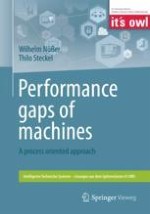In this publication a widespread phenomenon is studied: in many usage scenarios modern complex machines show a significant difference between the maximum sustainable performance available in well specified environments and the average performance many users experience in their everyday interaction with the machine. This performance gap appears to be increasing with technical progress and performance of machines.
Although this situation is probably well known to many readers -- and very often not so quietly endured -- it was not studied systematically so far. This publication describes the conceptual background of the performance gap in a very general way. It develops a semi-quantitative description and points to approaches to reduce the performance gap in current and future environments.
Process executives, engineers and system analysts will hopefully benefit from this approach especially in the dynamic environments envisioned in initiatives like the German Industrie 4.0.
In the technology network Intelligent Technical Systems OstWestfalenLippe (short: it’s OWL) around 200 companies, universities, research institutions and organisations have joined forces to jointly shape the innovative leap from mechatronics to intelligent technical systems. Together they develop approaches and technologies for intelligent products and production processes, smart services and the working world of the future. The spectrum ranges from automation and drive solutions to machines, vehicles, automats and household appliances to networked production plants and platforms. This creates a unique technology platform that enables companies to increase the reliability, resource efficiency and user-friendliness of their products and production systems and tap the potential of digital transformation.
